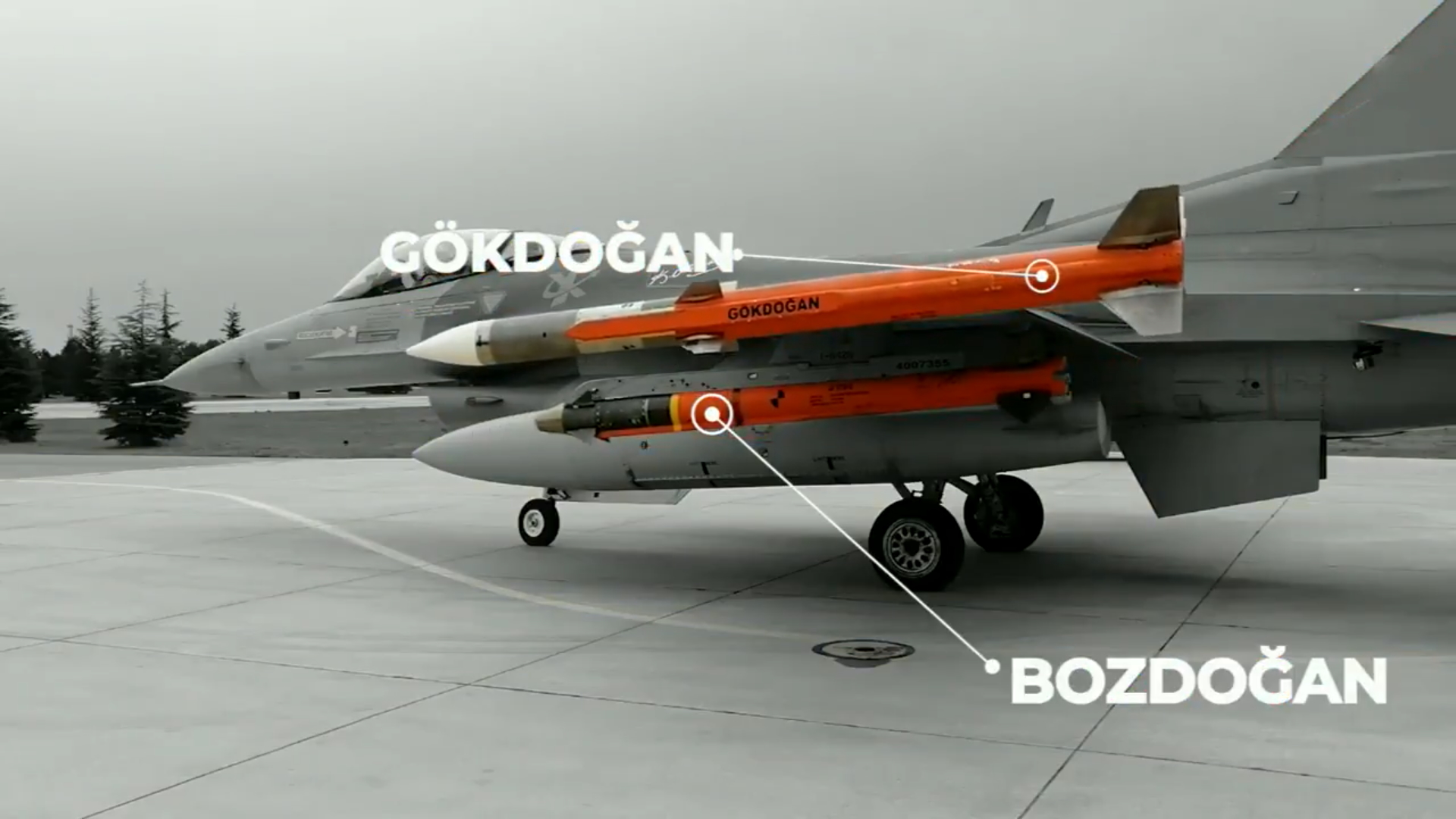BaburKhan
Contributor
- Messages
- 534
- Nation of residence
-

- Nation of origin
-






Making a long range AA missiles benefits limited to a bit longer no escape zone due to draining energy of the missiles against low altitute defensive maneuvares of the fighters if the tracking range of nose radar of J17s is shorter than gökdoğans range ,but gökdoğan is double rocket motor and makes these advantage less prominent.
Sorry to be a bit pedantic . But this post isn’t very explanatory of Gokdogan as it is contradictory in it self and doesn’t really explain what you are really trying to convey.Making a long range AA missiles benefits limited to a bit longer no escape zone due to draining energy of the missiles against low altitute defensive maneuvares of the fighters if the tracking range of nose radar of J17s is shorter than gökdoğans range ,but gökdoğan is double rocket motor and makes these advantage less prominent.

 www.defenceturkey.com
www.defenceturkey.com
Sorry to be a bit pedantic . But this post isn’t very explanatory of Gokdogan as it is contradictory in it self and doesn’t really explain what you are really trying to convey.
Gokdogan is a BVR air to air missile specifically produced to replace our Aim120 AMRAAM series. Unlike the Aim120 that uses dual thrust engines which gives initial high speed and then a sustain mode to the missile, our Gokdogan, if what below article is correct, apparently has a dual pulse engine which is analogous to higher spec and longer range missile performance levels. We already know that our missile has well exceeded the 100km range. The engine class Gokdogan uses is used by US and Chinese in their 200km + range a2a missiles.
Gokdogan does not have double motor.
It apparently has a dual pulse motor. This is, in a broad sense, a solid fuel propellent motor that has two sections of fuel tank whereby the missile uses first section to gain high speed and cruise towards target. Then as it‘s speed decreases and engages target it will use the fuel in the second section to give it more thrust and less chance for the target to escape, in the terminal phase.
quote:
Powered by solid fuel dual pulse rocket motor GÖKDOĞAN can travel at a speed of Mach 4.
unquote.

President ERDOĞAN Announces Successful Test of BOZDOĞAN WVR Air-to-Air Missile
On April 14, 2021, President Recep Tayyip ERDOĞAN announced that the BOZDOĞAN IIR guided within visual range (WVR) air-to-air missile developed by youth Turkish technicians and engineers under GÖKTUĞ Project has successfully destroyed its target (TUSAŞ`s ŞİMŞEK high-Speed target Drone) during...www.defenceturkey.com
The Aim120 missiles are all boost+sustain mode (dual thrust) operation missiles.
For sure. The charts i shared was the simulation: if AIM-120 were dual pulse.The Aim120 missiles are all boost+sustain mode (dual thrust) operation missiles.
AIM-120 Advanced Medium-Range Air-to-Air Missile (AMRAAM) Archives | Air & Space Forces Magazine
AMRAAM is an active, radar-guided, medium-range, supersonic air-to-air missile. It is a joint USAF-Navy follow-on to the AIM-7 Sparrow with launch-and-leave capability. The AIM-120B is an upgraded, re-programmable variant of the original missile. The AIM-120C incorporates smaller control...www.airandspaceforces.com
There was a development work re dual pulse. But if memory serves, it only was used in Aim 260 .
Well according to the above magazine excerpt, it has a double pulse engine.For sure. The charts i shared was the simulation: if AIM-120 were dual pulse.
I edited my post.
İnteresting thing is , delay doesn't increase range too much.
To be honest i didn't know about dual thrust. I googled it.
Dual-thrust rocket motor - Wikipedia
en.m.wikipedia.org
Then our BVR doesn't need dual pulse since it burns two different type of fuel.
The big deal with dual thrust is, if you have thrust vector nozzles like Hisar, then you can make maneuvers you couldn't really do at terminal stages otherwise or against targets that are already close which will require higher angular velocity for turns. That being said, from what I understand especially longer range missiles that have more modern guidance and those with already very high kinetic energy from get go are less dependent on the need to maneuver at terminal stages against air breathing targets. Ballistic missiles and exo atmospheric targets where you have no air to maneuver othwerwise still need stuff like pif paf.Well according to the above magazine excerpt, it has a double pulse engine.
I would have thought like you and said it wouldn’t need a double pulse and dual thrust would have sufficed.
But apparently we have chosen a double pulse engine for our BVR missile.
2.2+ Mach speed according to below magazine.What is max speed of Sungur?

 www.defenceturkey.com
www.defenceturkey.com
As Stinger missile. I heard it is faster than Stinger.2.2+ Mach speed according to below magazine.

SUNGUR: A Real 4th Generation MANPADS!
www.defenceturkey.com
They will firing Gezgin from submarine first?Rear Admiral (LH) Timur YILMAZ "We will soon see that we are firing ATMACA and GEZGİN G/ Ms from our submarines."
According to TurDef article it is faster than Stinger.As Stinger missile. I heard it is faster than Stinger.
